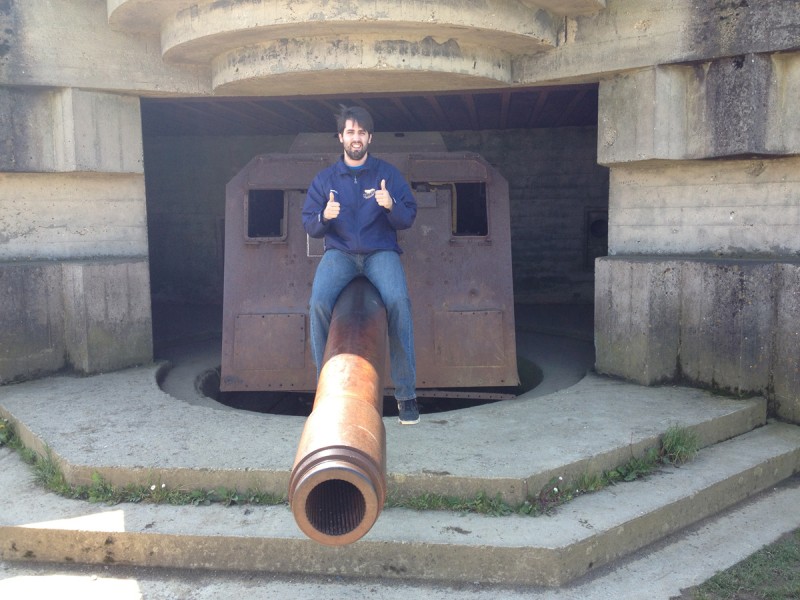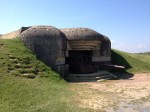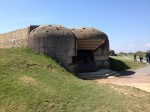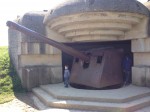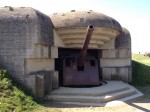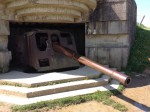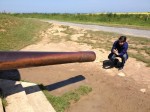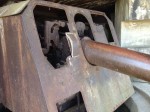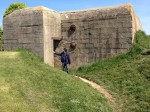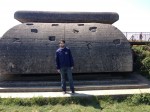1⁄1Battery Longues-sur-Mer
But not enough to stop the Allies in June, 1944.
One of the places where the Germans got serious about building hardened positions was Longues-sur-Mer on the Normandy coast. Near the medieval treasure of Bayeux, and smack in the middle of the Operation Overlord invasion beaches Omaha and Gold, these four artillery bunkers and their attendant command & control bunkers are still quite formidable nearly seventy years after the battle.
Perched on bluffs high above the rocky shore and set back several hundred yards from the edge of the cliffs, Longues-sur-Mer's 152mm/6" naval guns were intended to destroy any invasion fleet more than repel invaders. However, Hitler vastly underestimated the 6,000 Allied ships that would bring the Western Front to him on D-Day. The average cruiser had at least twice the firepower of these four guns. In spite of overwhelming odds, the battery acquitted itself tolerably well, even after a pounding from Allied air power and naval bombardment: the British cruisers Ajax and Argonaut had to disable three of the four guns, with the crews eventually surrendering to British infantry on June 7th.
The battery is at the end of a long, country road, and is open to the public. It costs nothing to visit, though paid guided tours can be booked. Paths take visitors along the front of the open casemates where three of the four guns are still in-place, though sadly time and the elements are taking their toll on them. Atop the bluffs is a command bunker right out of the film "The Longest Day" that is explorable despite some nasty shell holes. Off to the right of the bluffs, out in the surf off Gold Beach are the remains of one of the man-made harbors at Arromanches.
The Normandy coastline has many surviving bunkers, but Longues-sur-Mer is one of the best-preserved. It doesn't take a lot of imagination strolling through them to go back in time to June 6, 1944.




